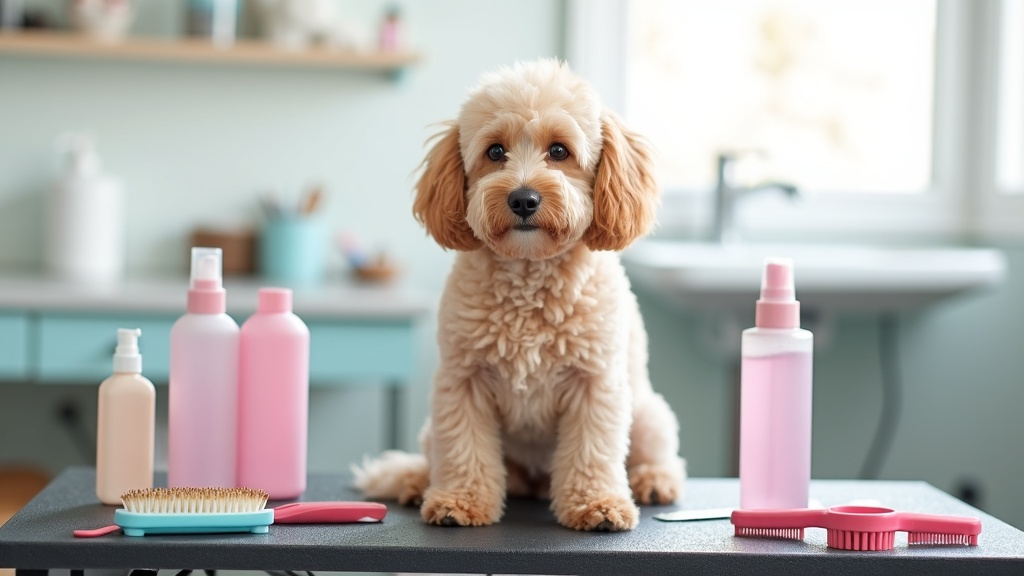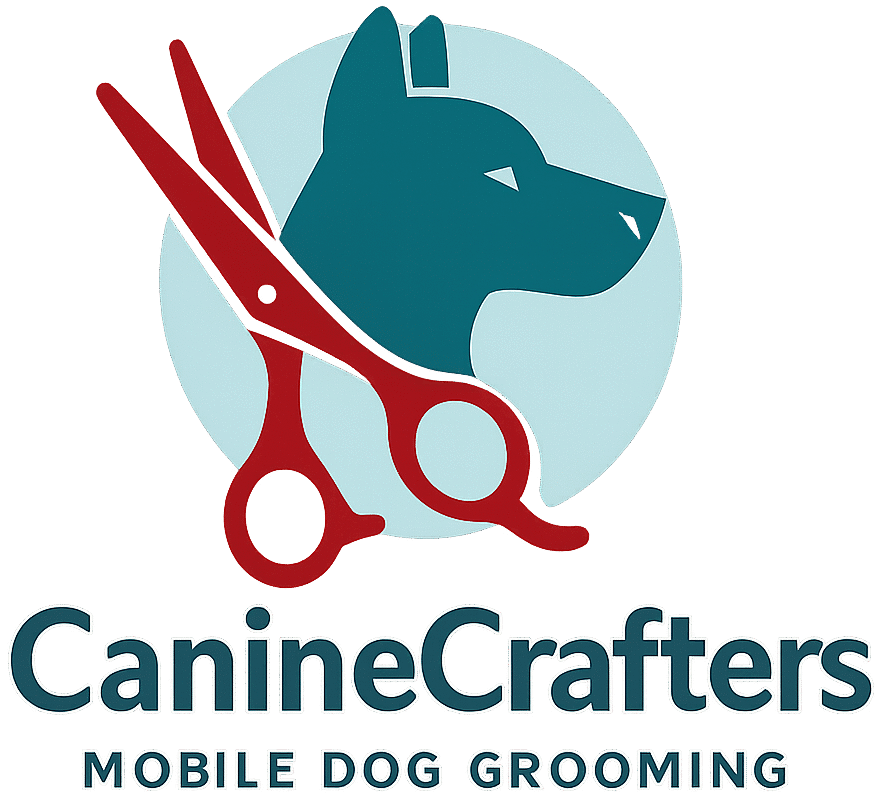If you share your life with a curly-haired dog, you already know that their fur isn’t just for show. It takes some dedication to keep those curls healthy and tangle free. Matting is something that sneaks up quickly with curly coats, turning a cuddly pooch into a walking tangle if you’re not on top of it. I’m breaking down everything you need to handle matting in curly haired dogs, including the best tools, techniques, and little tips that save you lots of hassle down the line.

Why Curly-haired Dogs Get Mats and Tangles?
Curls look adorable, but they’re magnets for tangling, dirt, and debris. Curly coats, like those on Poodles, Bichon Frises, and Portuguese Water Dogs, have hair that wraps around itself, so loose fur gets trapped instead of shedding out. Oil, shed undercoat, and outside debris all contribute to mats forming, especially in high friction places like under the collar or between the legs. Even regular playtime, rolling on the carpet, or a day at the dog park creates tons of opportunities for small tangles to form and quickly grow into tight mats.
Basics of Mat Prevention: What Every Owner Needs to Know
The best way to deal with matting is to stop it before it takes over. Mat prevention means brushing, bathing, and watching for trouble spots every single week. Here’s what’s involved:
- Brush Daily or Every Other Day: For most curly haired dogs, frequent brushing removes loose fur before it clumps. Start at the skin and work toward the tips, paying attention to areas that rub, like collars, armpits, around the ears, and under the tail.
- Keep Their Coat Dry: Never let a dog go to bed dirty or damp. Wet fur tangles faster, and mats love to form while drying. Towel off or blow dry with low heat after baths or walks in the rain.
- Regular Baths, But Not Too Many: Baths help loosen shedding fur and dirt but don’t go overboard. Too many can dry the skin and fur, making matting easier. Aim for once a month, plus a thorough brush before and after.
- Watch Out for Early Warning Signs: Run your hands through their fur every day. If you feel knots or tight areas starting, grab a comb and gently work them out right away.
Useful Grooming Tools for at home
The right gear makes a huge difference. Here’s what I use to stay ahead of mats and keep grooming time stress free:
- Slicker Brush: This brush works well to loosen small tangles and get deep into a curly coat without pulling too hard. Short strokes and gentle pressure help avoid hurting sensitive skin.
- Wide Tooth Comb: After brushing, use a comb to work through the coat from the skin outward. Spot tangles before they become mats.
- Detangling Spray or Conditioner: A mist of dog safe detangler helps slick down fur, making it much easier to tease out knots. It also adds some moisture to dry hair.
- Mat Splitter or Dematting Tool: For tackling tough mats, these tools break up thick tangles so brushing becomes possible. I always go slow and make sure not to pull the skin.
- Dull Edged Scissors: Sometimes, a mat is so tight and close to the skin that it’s safer to carefully snip it out. Rounded grooming scissors lower the accidental snip risk.
Step by Step: Removing Mats Safely
Mats might look harmless, but they get painful quickly. Mats pull on the skin, limit movement, and trap moisture, which can lead to infection. Not all mats need shearing. A lot can be handled at home with patience. Here’s how I tackle a stubborn mat:
- Check Out the Situation: Locate mats and check if the skin beneath is healthy (no redness or sores). If a mat is huge or near sensitive spots, it might be better to call a pro groomer.
- Gather Your Tools: Always have a slicker brush, comb, detangling spray, and, if needed, dematting tool or dull scissors handy.
- Start Small: Hold the fur at the base near the skin to prevent painful pulling. Lightly mist the mat with detangler.
- Gently Tease the Edges: Use your fingers or the comb to start loosening the mat a bit at a time, beginning at the ends and working inward. Never rip through a mat with force. Patience is key for your dog’s comfort and safety.
- If It’s Really Stuck: Use a dematting tool in a gentle sawing motion to break the mat into pieces, then work those out individually. For mats that are too close to the skin or simply won’t budge, careful trimming with blunt scissors is safest.
Things to Watch Out for When Managing Mats
There are plenty of common issues when it comes to matting in curly dogs. Knowing what to expect helps you sort things out before they get out of hand.
- Pain and Sensitivity: Mats pull on the skin, making dogs nervous or snappy. Always check for redness, swelling, or skin irritation, and don’t push them if they’re in pain.
- Skin Problems: Mats trap moisture, which can cause hot spots, swelling, and infection. After removing a mat, check the skin for sores and see your vet if anything looks off.
- Allergic Reactions: Some sprays and conditioners can cause itching or rashes. Do a patch test and always rinse products carefully.
- Matting Under Gear: Harnesses, coats, and even doggy pajamas cause friction and can lead to mats if worn for too long without brushing.
High Risk Matting Zones
Curly-haired dogs get most of their mats in a few key areas:
- Behind the ears
- Under the collar or harness
- Between the legs and pads
- Along the tummy and rear
Focusing extra brushing energy on these trouble zones before you hit the rest of the coat works wonders.
Advanced Tips: Stepping Up Your Grooming Game
Keeping a curly haired pup mat free becomes much easier with these simple tricks:
Routine Is Everything! Consistency pays off way more than marathon grooming sessions once mats show up. A few minutes a day beats a long struggle later.
Feed for Healthy Fur: A balanced diet with enough essential fatty acids helps keep curls soft and less prone to tangling. Chat with your vet about food or supplements if you’re not sure what’s best for their coat type.
Professional Grooming: Even if you do most upkeep yourself, scheduling a professional groom every 4 to 8 weeks helps keep curls under control and catches any big mats before they cause problems.
Clipping and Scissoring: If you want your dog’s curls short, use grooming clippers with the proper guard or leave trimming to the pros. Shorter cuts are easier to maintain but need regular touch ups to stay mat free.
FAQs on Managing Matting in Curly-haired Dogs
Here’s what comes up most often among pet parents I’ve chatted with:
How often should I brush my curly-haired dog?
Aim for every other day. Daily brushing is best for active dogs or breeds prone to heavy matting.
Should I ever cut out a mat myself?
Gentle cutting is fine for small, loose mats. Tight or skin close mats are always best left to a pro. Cutting too close can accidentally nip the skin.
My dog hates brushing. What can I do?
Use treats, praise, and short, positive grooming sessions. Desensitizing dogs to the brush slowly makes a big difference. Let them sniff and see the tools before starting, and brush in a quiet spot they like.
What if I use people products or regular scissors?
Stick with pet safe sprays and round tipped scissors. Human hair products can be irritating, and sharp scissors increase the risk of accidents.
Are some breeds just impossible to keep mat free?
No breed is impossible, but some make it harder. Regular coat maintenance, good nutrition, and help from professional groomers all make a big difference, no matter the breed or mix.
How a Pro Groomer Can Help and When to Call One
There are times when even diligent brushing won’t solve everything. If you spot large, stubborn mats, ones close to the skin, or see any signs of infection or discomfort, it’s always a smart move to book a visit with a pro groomer. Groomers have training and special tools for tough situations, and they also spot skin or coat issues before they get serious. Getting occasional trims from a professional helps keep the coat at a manageable length for easier at home care.
Sticking to a regular routine, using the right tools, and being proactive with problem areas makes life with a curly-haired dog a lot smoother. It’s definitely worth the effort for those happy, healthy, mat free curls. Plus, your dog will love all the extra attention, and you’ll have way less to worry about when it comes to tangled fur. So, keep up the good work and enjoy every snuggle with your curly companion!

I enjoyed reading this article. You have some good suggestions here. I have a small dog with curly (not too tight) hair. I’m going to try a detangling spray as you have suggested. Thanks for this post.
-Shirley